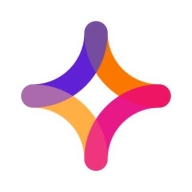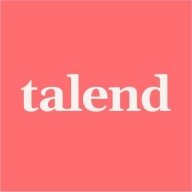

Jitterbit Harmony and Talend Open Studio are competing products in the data integration space. Jitterbit Harmony appears to have an edge in ease of use and customer support, while Talend Open Studio offers a broader range of features, which may make it more attractive to businesses seeking advanced capabilities.
Features: Jitterbit Harmony is known for its intuitive design, streamlined process integration, and robust preconfigured connectors like Salesforce and SAP, which simplify setup. Talend Open Studio is praised for its comprehensive data transformation tools, extensive catalog of over 900 components, and exceptional ETL capabilities, providing advanced tools for complex data tasks.
Room for Improvement: Jitterbit Harmony could enhance its feature set to match the broader functionality of other platforms. It might benefit from expanding its open-source community and offering more customizable solutions. Enhancements in integration with non-major data sources can also be considered. Talend Open Studio can improve by simplifying deployment to reduce its steep learning curve, optimizing customer support response times, and reducing resource demands for maximizing feature use.
Ease of Deployment and Customer Service: Jitterbit Harmony offers a simplified deployment process and responsive customer service, ensuring quick setup and issue resolution. Talend Open Studio, while powerful, requires a greater initial time investment due to its steep learning curve and complex deployment steps, which can necessitate additional training and support services.
Pricing and ROI: Jitterbit Harmony, despite a higher initial cost, delivers quicker ROI through efficiency and strong support, making it a preferred choice for businesses needing swift implementation. Talend Open Studio, being open-source, offers a lower cost of entry but might result in a longer ROI timeline if additional time and resources are required to fully leverage its advanced features.


Jitterbit Harmony is a comprehensive platform for data integration and API management, enabling seamless synchronization and automation across cloud-based and on-premises applications.
Users leverage Jitterbit Harmony to integrate systems like ERP and CRM applications, simplifying complex data workflows and enhancing automation. It supports efficient data migration and ensures smooth connectivity, handling diverse integration needs and helping streamline business processes. Users emphasize its drag-and-drop functionality and extensive templates, which contribute to its robust performance. However, improvements are needed in data mapping, error message clarity, and documentation, especially when dealing with large data volumes.
What are the key features of Jitterbit Harmony?Companies across retail, manufacturing, healthcare, and finance sectors use Jitterbit Harmony to integrate critical applications and automate workflows. In retail, it connects inventory systems with sales platforms, reducing manual effort. Manufacturers sync their ERP systems with supply chain software, optimizing operations. Healthcare organizations integrate patient management systems with insurance databases, streamlining patient care. Financial institutions use it to connect accounting software with banking systems, ensuring real-time financial data exchange.
Talend Open Studio is a free, open source ETL tool for data integration and Big Data. The solution enables you to extract diverse datasets and normalize and transform them into a consistent format which can be loaded into a number of third-party databases and applications.
Talend Open Studio Features
Talend Open Studio has many valuable key features. Some of the most useful ones include:
Talend Open Studio Benefits
There are several benefits to implementing Talend Open Studio. Some of the biggest advantages the solution offers include:
Reviews from Real Users
Below are some reviews and helpful feedback written by PeerSpot users currently using the Talend Open Studio solution.
Elio B., Data Integration Specialist/CTO at Asset messages, says, "The solution has a good balance between automated items and the ability for a developer to integrate and extend what he needs. Other competing tools do not offer the same grade of flexibility when you need to go beyond what is provided by the tool. Talend, on the other hand, allows you to expand very easily."
A Practice Head, Analytics at a tech services company mentions, “The data integration aspect of the solution is excellent. The product's data preparation features are very good. There's very useful data stewardship within the product. From a technical standpoint, the solution itself is pretty good. There are very good pre-built connectors in Talend, which is good for many clients or businesses, as, in most cases, companies are dealing with multiple data sources from multiple technologies. That is where a tool like Talend is extremely helpful.”
Prerna T., Senior System Executive at a tech services company, comments, “The best thing I have found with Talend Open Studio is their major support for the lookups. With Salesforce, when we want to relate our child objects to their parent object, we need to create them via IDs. Then the upsert operation, which will allow you to relate a child object to the event, will have an external ID. That is the best thing which keeps it very sorted. I like that.”
An Implementation Specialist, Individual Contributor at a computer software company, states, “I can connect with different databases such as Oracle Database or SQL Server. It allows you to extract the data from one database to another. I can structure the data by filtering and mapping the fields.” He also adds, “It is very user-friendly. You need to know the basics of SQL development or SQL queries, and you can use this tool.”
PeerSpot user Badrakh V., Information System Architect at Astvision, explains, "The most valuable features are the ETL tools."
We monitor all Data Integration reviews to prevent fraudulent reviews and keep review quality high. We do not post reviews by company employees or direct competitors. We validate each review for authenticity via cross-reference with LinkedIn, and personal follow-up with the reviewer when necessary.